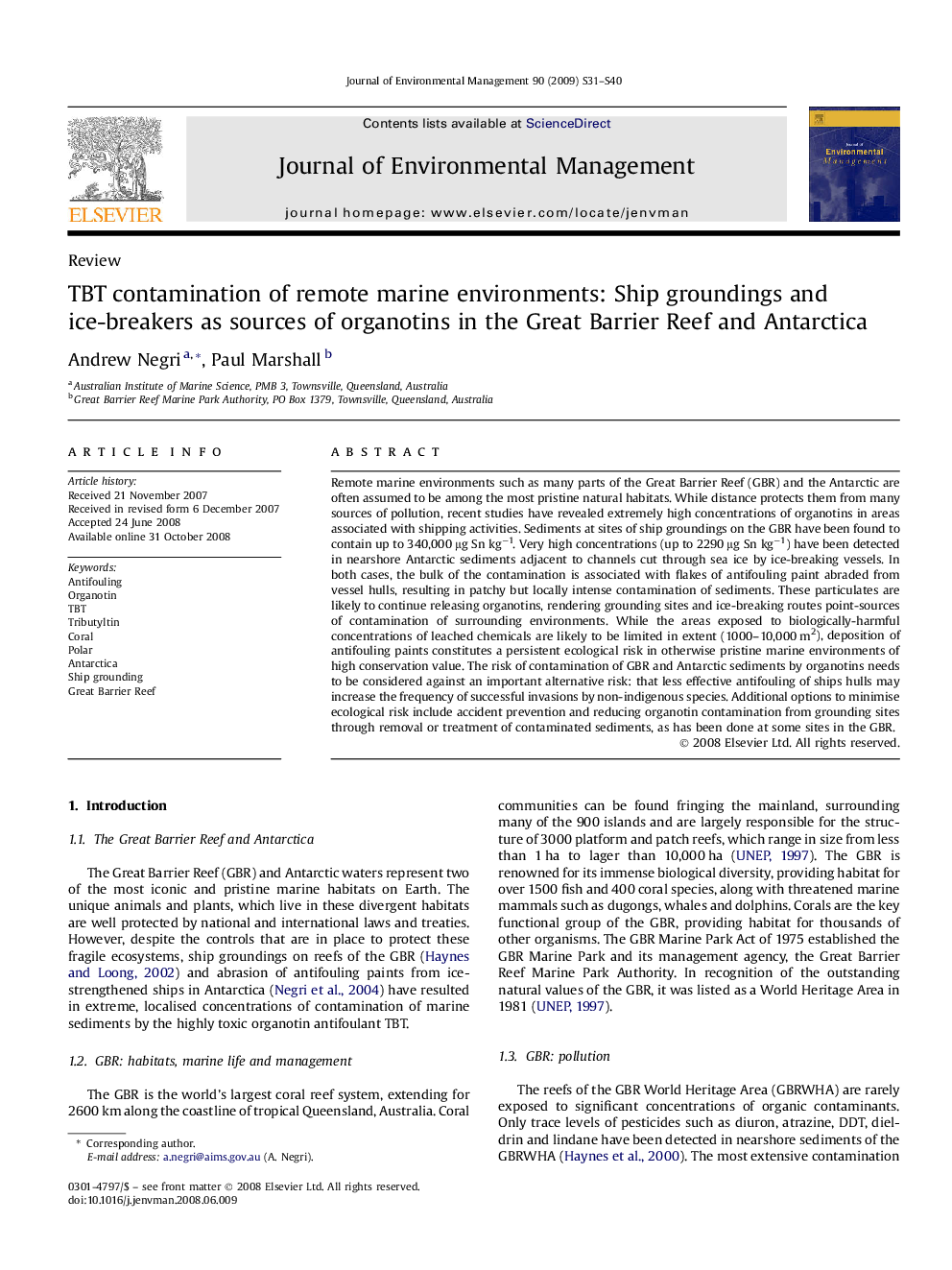| Article ID | Journal | Published Year | Pages | File Type |
|---|---|---|---|---|
| 1058538 | Journal of Environmental Management | 2009 | 10 Pages |
Remote marine environments such as many parts of the Great Barrier Reef (GBR) and the Antarctic are often assumed to be among the most pristine natural habitats. While distance protects them from many sources of pollution, recent studies have revealed extremely high concentrations of organotins in areas associated with shipping activities. Sediments at sites of ship groundings on the GBR have been found to contain up to 340,000 μg Sn kg−1. Very high concentrations (up to 2290 μg Sn kg−1) have been detected in nearshore Antarctic sediments adjacent to channels cut through sea ice by ice-breaking vessels. In both cases, the bulk of the contamination is associated with flakes of antifouling paint abraded from vessel hulls, resulting in patchy but locally intense contamination of sediments. These particulates are likely to continue releasing organotins, rendering grounding sites and ice-breaking routes point-sources of contamination of surrounding environments. While the areas exposed to biologically-harmful concentrations of leached chemicals are likely to be limited in extent (1000–10,000 m2), deposition of antifouling paints constitutes a persistent ecological risk in otherwise pristine marine environments of high conservation value. The risk of contamination of GBR and Antarctic sediments by organotins needs to be considered against an important alternative risk: that less effective antifouling of ships hulls may increase the frequency of successful invasions by non-indigenous species. Additional options to minimise ecological risk include accident prevention and reducing organotin contamination from grounding sites through removal or treatment of contaminated sediments, as has been done at some sites in the GBR.
